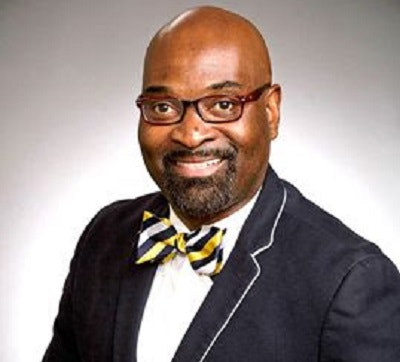The call from my college classmate was all too familiar—it started with “he’s super smart, but he struggles in some areas.” As a researcher and scholar who writes about the experiences of academically gifted Black males across the P-20 educational continuum, I welcomed this inquiry from my college classmate. While my prior academic training provided me with a broad survey of exceptionalities that students presented in education contexts; what it meant to be gifted, and what it meant to be special needs were often treated singularly. Thus, a key question then becomes, what do we do when an individual occupies both of these spaces at the same time—especially academically gifted Black males?
 Dr. Fred A. Bonner II
Dr. Fred A. Bonner IIWhat has been one of the most intriguing topics, at least from my perspective as a gifted and higher education researcher, has been the scholarship on twice-exceptionality. A relatively new, and often misunderstood term, the twice-exceptional student possesses outstanding gifts or talents and is capable of high performance, but also has a disability that affects some aspect of his or her learning (NEA, 2006). According to Kaufman (2018), “In 2004, the reauthorization of the Individuals with Disabilities Education Improvement Act finally recognized the disabled student that has ‘not failed or been retained in a course, and is advancing from grade to grade’.” For example, the academically (gifted) student who is dyslexic (disability) could be identified as being twice-exceptional.
The extant literature in giftedness and gifted education tends to narrowly speak to the experiences of non-minority (White) students who are identified as twice-exceptional. A few contemporary scholars (Lawson-Davis & Robinson, 2018) have taken on the task of underscoring how twice-exceptionality intersects with diverse student populations, particularly Black and LatinX students in P-12 school settings. According to Lawson-Davis and Robinson in their book chapter titled, Being 3e, A New Look at Culturally Diverse Gifted Learners With Exceptional Conditions: An Examination of the Issues and Solutions for Educators and Families, they too reimagine the meaning of twice-exceptionality for diverse student cohorts, “The 3e label signifies three exceptional conditions: being culturally diverse (members of socially oppressed group); being gifted or having high potential, and simultaneously being LD (learning disabled) or having another disabling condition (such as dyslexia)” (Lawson-Davis & Robinson, 2018, p. 279). They assert that for the twice-exceptional, “What this article attempts to do is to reframe and unpack twice-exceptionality to reveal how this term, when applied to students of color, especially gifted Black males should be re-theorized” (Lawson-Davis & Robinson).
Thus, while the mainstream definition of twice-exceptional students offered by the National Education Association (NEA) states, students who are gifted and disabled are at risk for not achieving their potential because of the relationship that exists between their enhance cognitive abilities and their disabilities serves as one of the formal definition, I offer an alternative view of this term when applied to the P-12 schooling experiences of academically gifted Black males. Therefore, I offer tw(y)ce exceptional as the label that more aptly represents the engagements of gifted Black males. Whereas twice-exceptionality recognizes the simultaneity of possessing giftedness and a disability, so too does tw(y)ce-exceptionality recognize this duality. However, where the definition of these two terms differ is the codification of the actual disability.
For the twice-exceptional student, the list of disabilities potentially includes:
- Specific Learning Disabilities (SpLD)
- Speech and Language Disorders
- Emotional/Behavioral Disorders
- Physical Disabilities
- Autism Spectrum
- Attention Deficit Hyperactivity Disorder (ADHD) (NAGC, 2018)
For the tw(y)ce-exceptional student, the list of disabilities potentially includes:
- Gender
- Race
- Class
- Culture
- Ethnicity
- Socioeconomic Status
The goal of this re-theorized approach to this critical concept is to unapologetically draw attention to gifted Black males in P-12 school settings whose enhanced cognitive abilities are often diminished by agents (administrators, gifted counselors, and teachers) who treat their minority status as a disabling condition. Said differently, racism and ethnic bias toward gifted Black boys can exact a similar impact as autism and ADHD experienced among their White male counterparts.
I conclude this introduction of Tw(y)ce Exceptionality with recommendations for administrators, gifted coordinators, parents, teachers, and researchers who seek to not only better understand but also to promote best practices and strategies leading to meaningful changes for academically gifted Black males in P-12 education contexts. I firmly believe that the point of initiation to effect change for these males begins with self-reflection regarding the assumptions and beliefs we hold about Black males in general and their potential for success in school in particular. According to Bonner (2014), “…the question then becomes, ‘What is the end we seek for Black males in schooling contexts?’ Perhaps the knee-jerk response to this question is that we want all Black males to be successful….What is our definition of success?”
Dr. Fred A. Bonner II is professor and Endowed Chair in Educational Leadership and Counseling at Prairie View A&M University and is the executive director of the Minority Achievement, Creativity, and High Ability Center.
















